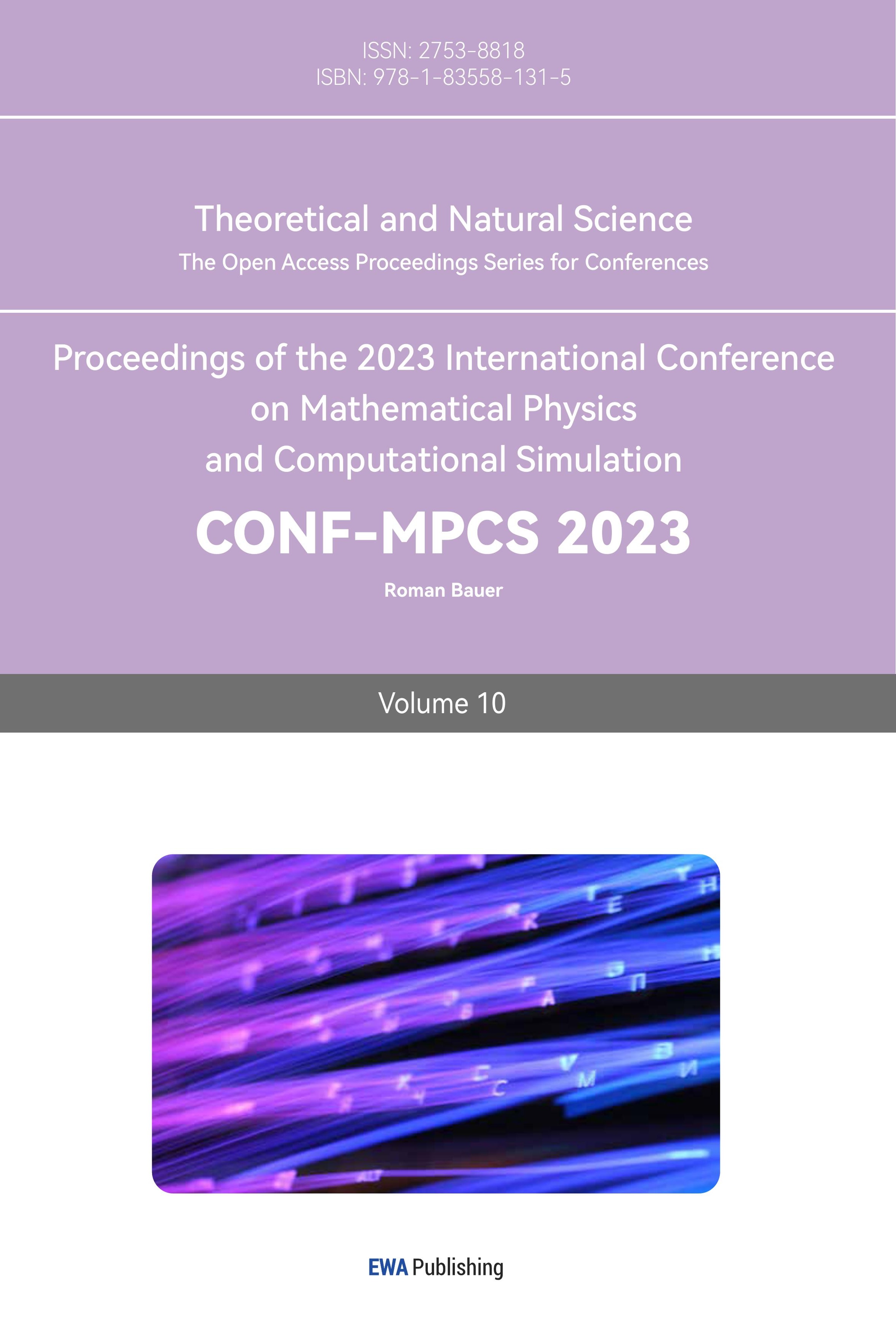References
[1]. Crothers S J 2006 Progress in Physics vol 2 p 54.
[2]. Dobrijevic D, Tillman N and Biggs B 2022 Black holes: Everything you need to know. Science & Astronomy. Available at: https://www.space.com/15421-black-holes-facts-formation-discovery-sdcmp.html [Accessed 9 Apr. 2023].
[3]. Thorne K 1995 Black Holes & Time Warps: Einstein's Outrageous Legacy (Commonwealth Fund Book Program). WW Norton & Company.
[4]. Event Horizon telescope 2017 Why is it important to study black holes? What is there to be learned from the EHT observations? [online] eventhorizontelescope.org. Available at: https://eventhorizontelescope.org/faq/why-it-important-study-black-holes-what-there-be-learned-eht-observations.
[5]. Heinicke C and Hehl F W 2015 International Journal of Modern Physics D vol 24(02) p 1530006.
[6]. Netzer H 2013 The Physics and Evolution of Active Galactic Nuclei. Cambridge: Cambridge University Press.
[7]. Zwart S F P and McMillan S L 1999 The Astrophysical Journal vol 528(1) p L17.
[8]. Abbott B P, Abbott R, Abbott T D, et al. 2016 Physical Review Letters vol 116(6) p 061102.
[9]. Raidal M, Vaskonen V and Veermäe H 2017 Journal of Cosmology and Astroparticle Physics, vol 09 p 037.
[10]. Schmidt P 2020 Journal of Frontiers in Astronomy and Space Sciences, vol 7 p 1.
[11]. Pook-Kolb D, Birnholtz O, Krishnan B, and Schnetter E 2019 arXiv preprint arXiv:1903.05626.
[12]. Ota L 2019 How Scientists Captured the First Image of a Black Hole. Available at: https://www.jpl.nasa.gov/edu/news/2019/4/19/how-scientists-captured-the-first-image-of-a-black-hole/
[13]. Wenhui C 2019 I heard that the EHT telescope has photographed a black hole so what is EHT. Available at: https://wenhui.whb.cn/third/baidu/201904/10/254998.html
[14]. Green Fruit's Big Read 2019 What does photographing a black hole mean for humanity? The sci-entist told the truth and was a little worried. Available at: https://www.163.com/dy/article/E-CDVJ78A0521IETV.html
[15]. Marolf D 2017 Reports on Progress in Physics vol 80(9) p 092001.
[16]. Chen P, Ong Y C and Yeom D H 2015 Physics reports vol 603 p 1-45.
Cite this article
Chen,X.;Liu,Y.;Zhang,R. (2023). Black holes merger and the state-of-art detections. Theoretical and Natural Science,10,255-260.
Data availability
The datasets used and/or analyzed during the current study will be available from the authors upon reasonable request.
Disclaimer/Publisher's Note
The statements, opinions and data contained in all publications are solely those of the individual author(s) and contributor(s) and not of EWA Publishing and/or the editor(s). EWA Publishing and/or the editor(s) disclaim responsibility for any injury to people or property resulting from any ideas, methods, instructions or products referred to in the content.
About volume
Volume title: Proceedings of the 2023 International Conference on Mathematical Physics and Computational Simulation
© 2024 by the author(s). Licensee EWA Publishing, Oxford, UK. This article is an open access article distributed under the terms and
conditions of the Creative Commons Attribution (CC BY) license. Authors who
publish this series agree to the following terms:
1. Authors retain copyright and grant the series right of first publication with the work simultaneously licensed under a Creative Commons
Attribution License that allows others to share the work with an acknowledgment of the work's authorship and initial publication in this
series.
2. Authors are able to enter into separate, additional contractual arrangements for the non-exclusive distribution of the series's published
version of the work (e.g., post it to an institutional repository or publish it in a book), with an acknowledgment of its initial
publication in this series.
3. Authors are permitted and encouraged to post their work online (e.g., in institutional repositories or on their website) prior to and
during the submission process, as it can lead to productive exchanges, as well as earlier and greater citation of published work (See
Open access policy for details).
References
[1]. Crothers S J 2006 Progress in Physics vol 2 p 54.
[2]. Dobrijevic D, Tillman N and Biggs B 2022 Black holes: Everything you need to know. Science & Astronomy. Available at: https://www.space.com/15421-black-holes-facts-formation-discovery-sdcmp.html [Accessed 9 Apr. 2023].
[3]. Thorne K 1995 Black Holes & Time Warps: Einstein's Outrageous Legacy (Commonwealth Fund Book Program). WW Norton & Company.
[4]. Event Horizon telescope 2017 Why is it important to study black holes? What is there to be learned from the EHT observations? [online] eventhorizontelescope.org. Available at: https://eventhorizontelescope.org/faq/why-it-important-study-black-holes-what-there-be-learned-eht-observations.
[5]. Heinicke C and Hehl F W 2015 International Journal of Modern Physics D vol 24(02) p 1530006.
[6]. Netzer H 2013 The Physics and Evolution of Active Galactic Nuclei. Cambridge: Cambridge University Press.
[7]. Zwart S F P and McMillan S L 1999 The Astrophysical Journal vol 528(1) p L17.
[8]. Abbott B P, Abbott R, Abbott T D, et al. 2016 Physical Review Letters vol 116(6) p 061102.
[9]. Raidal M, Vaskonen V and Veermäe H 2017 Journal of Cosmology and Astroparticle Physics, vol 09 p 037.
[10]. Schmidt P 2020 Journal of Frontiers in Astronomy and Space Sciences, vol 7 p 1.
[11]. Pook-Kolb D, Birnholtz O, Krishnan B, and Schnetter E 2019 arXiv preprint arXiv:1903.05626.
[12]. Ota L 2019 How Scientists Captured the First Image of a Black Hole. Available at: https://www.jpl.nasa.gov/edu/news/2019/4/19/how-scientists-captured-the-first-image-of-a-black-hole/
[13]. Wenhui C 2019 I heard that the EHT telescope has photographed a black hole so what is EHT. Available at: https://wenhui.whb.cn/third/baidu/201904/10/254998.html
[14]. Green Fruit's Big Read 2019 What does photographing a black hole mean for humanity? The sci-entist told the truth and was a little worried. Available at: https://www.163.com/dy/article/E-CDVJ78A0521IETV.html
[15]. Marolf D 2017 Reports on Progress in Physics vol 80(9) p 092001.
[16]. Chen P, Ong Y C and Yeom D H 2015 Physics reports vol 603 p 1-45.









